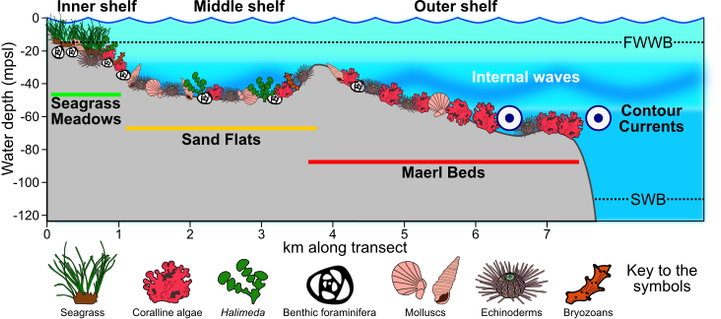We usually think of #sediment getting finer as we move away from the shore. But, when biogenic and oceanographic factors come into play in the #mesophotic zone, the patterns could be quite different.
I'm really happy with how this paper came out. It's a very holistic view of how sedimentary #facies are actually distributed, with #seafloor photography, acoustic imaging, sampling, quantitative thin section analysis, and #multivariant statistics.
https://link.springer.com/article/10.1007/s10347-024-00690-1
Controls on mesophotic carbonate facies and sediment distribution across the Maltese shelf, central Mediterranean Sea - Facies
Although ~ 20% of global carbonate production occurs on extra-tropical carbonate depositional systems, our understanding of these environments still lags behind that of tropical ones. The Maltese shelf in the central Mediterranean offers an opportunity to study in situ facies distribution and the factors controlling it in a light-dominated setting. The investigated region of the Maltese shelf visually exhibits three main depositional environments: seagrass meadows, sand flats and rhodolith and maerl beds. While visually distinctive, the grain composition of the sediments does not provide a clear differentiation of the three environments but rather a gradient. This gradient is marked by increasing grain size with water depth, a transition from green to red calcareous algae and an increase in the fraction of low magnesium calcite of total carboantes. While some of these features can be explained by changes in light availability, other factors are also in play. Baffling by seafloor vegetation and currents, storms and internal waves inducing sediment reworking appear to play important roles in governing the sediment texture and composition across the Maltese shelf. The role of seagrass meadows in regulating production and accumulation rates of carbonates appears to be of greater importance in Mediterranean C-type carbonate factories than in southern Atlantic ones and this could be an important marker to identify them in the geological record.
